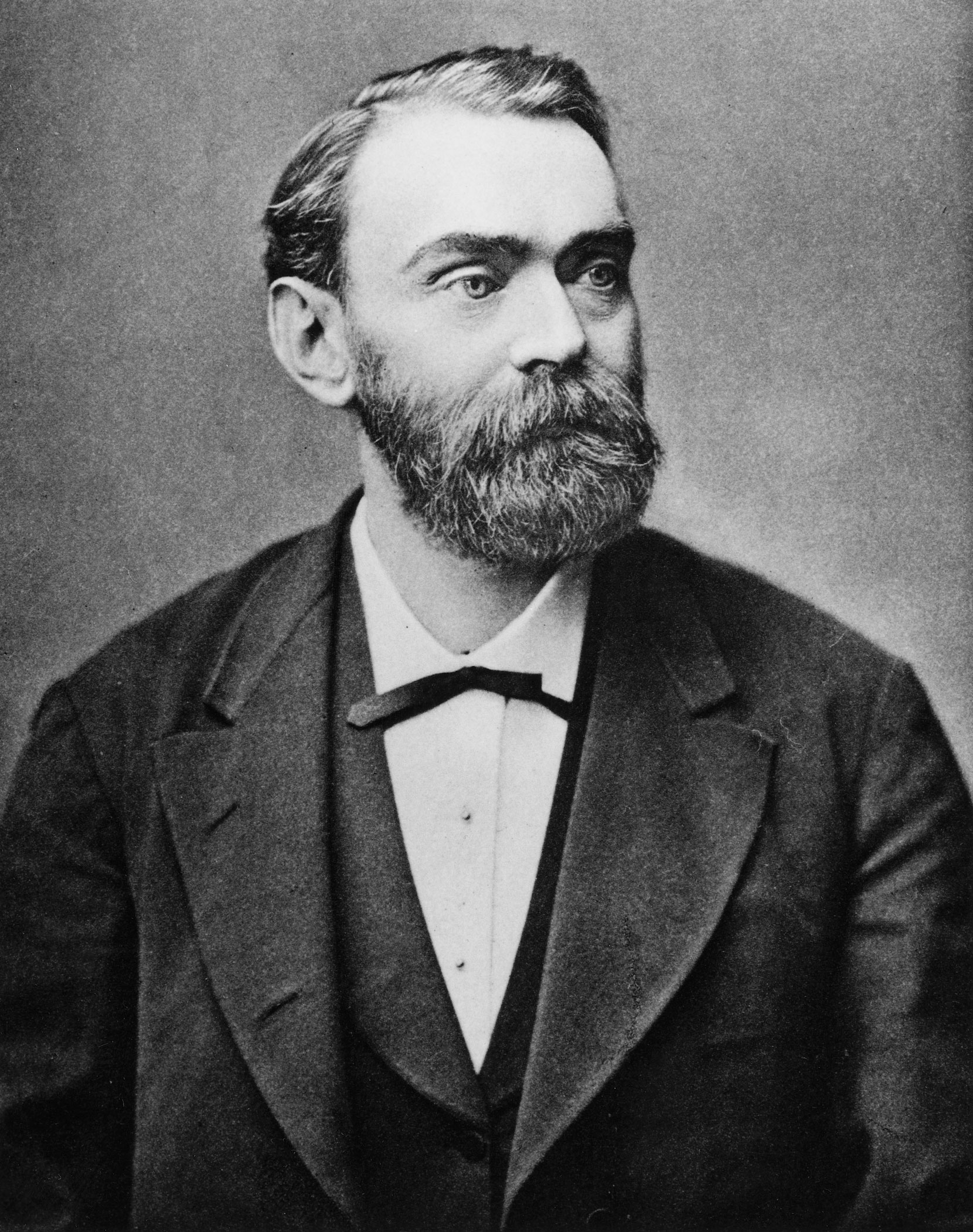Content Developer Rupert Cole explores the most famous science prize of all, and some of its remarkable winners.
Today, science’s most prestigious and famous accolades will be awarded in Stockholm: the Nobel Prize.
Before we raise a toast to this years’ winners in physics, Peter Higgs and Belgian François Englert, let’s take a look back at the man behind the Prize, and some of its winners.
Alfred Nobel
A Swedish explosives pioneer who made his millions from inventing dynamite, Alfred Nobel left in his will a bequest to establish an annual prize for those who have “conferred the greatest benefit to mankind”, across five domains: physics, chemistry, physiology or medicine, literature and peace. To this end, he allocated the majority of his enormous wealth.

When Nobel’s will was read after his death in 1896, the prize caused an international controversy. Unsurprisingly, Nobel’s family were not best pleased, and vigorously opposed its establishment. It took five years before it was finally set up and the first lot awarded – the 1901 physics accolade going to Wilhelm Rontgen for his 1895 discovery of x-rays.
Paul Dirac’s maternal mortification
When the phone rang on 9 November 1933, the exceptionally gifted yet eccentric Paul Dirac was a little taken back to hear a voice from Stockholm tell him he had won the Nobel Prize.
The looming press attention, which had always surrounded the Nobels, made the reclusive Dirac consider rejecting the award, until Ernest Rutherford – JJ Thomson’s former student and successor as Cavendish professor – advised him that a “refusal will get you more publicity”.
Under different circumstances Rutherford had been similarly “startled” when he found out he was to be given a Nobel – a physicist through and through, he was awarded the 1908 Prize in Chemistry, joking his sudden “metamorphosis into a chemist” was very unexpected.
Dirac shared the 1933 physics prize with Erwin Schrödinger – famed for his eponymous equation and dead-and-alive cat – for their contributions to quantum mechanics. Each was allowed one guest at the award ceremony held at the Swedish Royal Academy of Science. Schrödinger brought his wife, Dirac brought his mother.

Florence Dirac did what all good mothers do: embarrass her son in every way imaginable. The first incident came at a station café in Malmo, where in this unlikely setting an impromptu press conference took place.
Dirac, who had been described by the British papers as “shy as a gazelle and modest as a Victorian maid,” was asked “did the Nobel Prize come as a surprise?” Before he could answer, Dirac’s mother butted in: “Oh no, not particularly, I have been waiting for him to receive the prize as hard as he has been working.”
The next embarrassment came when Mrs Dirac failed to wake up when the train reached Stockholm. She was ejected by a guard, who had thrown her garments and belongings out of the carriage window. The Diracs arrived late, and meekly hid from the attention of the welcoming party – who had been wondering where they were.
The third and final maternal faux pas came at Stockholm’s Grand Hotel. The pair had been booked into the finest room – the bridal suite. Mrs Dirac, displeased, demanded a room of her own, which Dirac paid for out of his own pocket. It doesn’t matter if you’ve co-founded quantum mechanics, predicted antimatter and won the Nobel Prize; mothers will be mothers.
Peter’s Pride
Like other humble laureates before him, Peter Higgs wished to duck out of the press furore surrounding the Nobel. At the time of the announcement on the 8th October there was a nail-biting delay. The cause? The Nobel committee could not get hold of Higgs, who had turned his phone off and planned to escape to the Scottish Highlands.
As Peter Higgs revealed to me at the opening of the Collider exhibition at the Science Museum, if it was not for a dodgy Volkswagen beetle or public transport, Peter would have made it to the Highlands on Nobel day. Instead, he just laid low in Edinburgh.

At the Collider launch last month, we celebrated with Higgs in the appropriate way: over a personalised bottle of London Pride ale – the same beverage he chose in favour of champagne on the flight home from CERN’s public announcement of the Higgs boson discovery. So, when Englert and Higgs receive the honour today, let’s all raise two glasses: an English Ale and a Belgian Blonde!
For more on many of the Nobel prize-winning discoveries in physics history, including those of Dirac, Englert and Higgs, visit the Collider exhibition at the Science Museum.